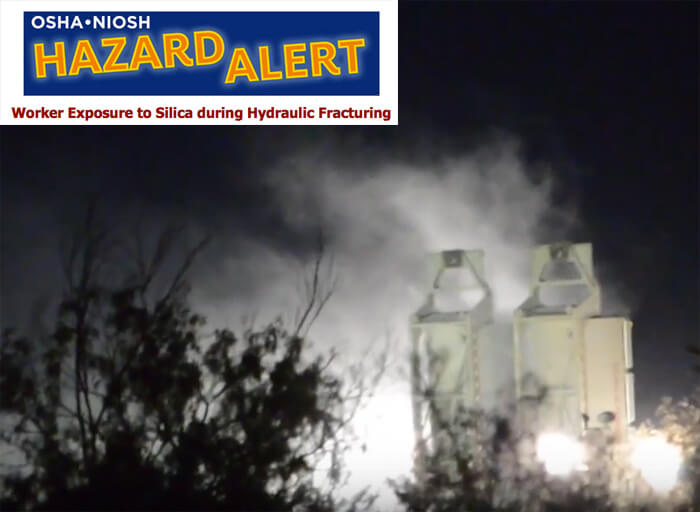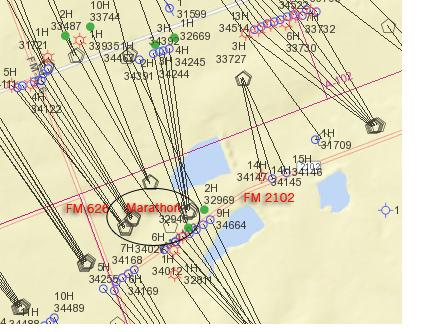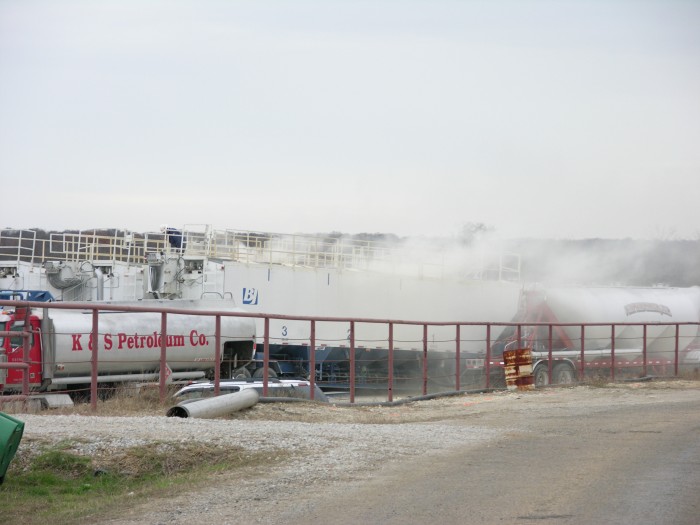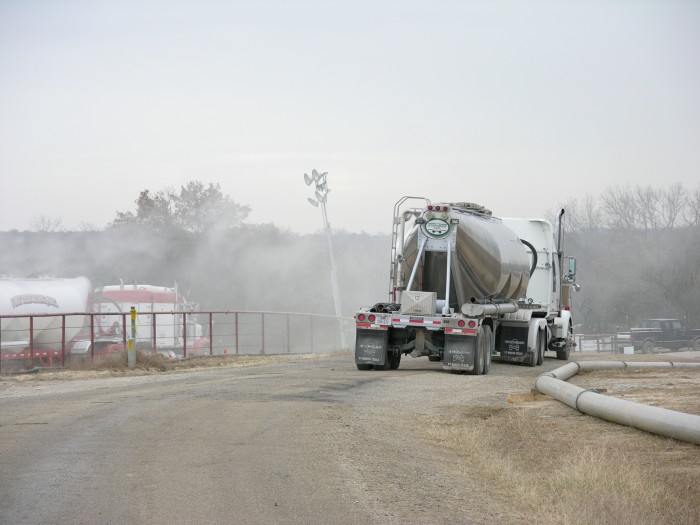
Happy Labor Day!
This video was filmed in Karnes County Texas on August 24, 2015, at 8:42 PM near the intersection of FM 2102 and FM 626. OSHA has issued a warning that silica sand exposure during hydraulic fracturing is a health hazard to workers. What about the residents who live near hydraulic fracturing? What about the animals?
OSHA – NIOSH Hazard Warning for silica sand exposure during hydraulic fracturing.
The National Institute for Occupational Safety and Health (NIOSH) identified exposure to airborne silica as a health hazard to workers conducting some hydraulic fracturing operations during recent field studies.
NIOSH Findings on Worker Exposures to Silica
In cooperation with oil and gas industry partners, NIOSH collected 116 full shift air samples at 11 hydraulic fracturing sites in five states (Arkansas, Colorado, North Dakota, Pennsylvania, and Texas) to determine the levels of worker exposure to silica at various jobs at the worksites. Many air samples showed silica levels for workers in and around the dust generation points above defined occupational exposure limits.1
Of the 116 samples collected:47% showed silica exposures greater than the calculated OSHA PEL.
- 79% showed silica exposures greater than the NIOSH REL of 0.05 milligrams per cubic meter (mg/m3).
- 9% of all samples showed silica exposures 10 or more times the PEL, with one sample more than 25 times the PEL.
- 31% of all samples showed silica exposures 10 or more times the REL, with one sample more than 100 times the REL.
The site with exposure of more than 100 times REL was in…can you guess? Texas!
According to the Texas Railroad Commission GIS map, it appears that Marathon is the operator of the wells in that area.
 There were numerous fracking operations going on in Karnes County during the month of August when I was there. People in the area complain of bronchitis from which they can’t recover.
There were numerous fracking operations going on in Karnes County during the month of August when I was there. People in the area complain of bronchitis from which they can’t recover.
Most doctors don’t understand the fracking process and are ignorant about all the particulate matter emitted during the operations. We desperately need physician education.
Centers for Disease Control has a blog post about silica sand exposure during hydraulic fracturing but it is focused on worker exposures. What about the residents who live near hydraulic fracturing? What about the animals?
Here’s what:
Video of a Hillwood frack site in Argyle, Texas with frac sand blowing toward the nearby elementary school.
Video of a frack site in Argyle, Texas showing a worker with no breathing protection.
Here you can see a picture of frac sand covering Runner Susan’s pool. The sand traveled an estimated 5 miles from the frack site. Each morning during the fracking operation, she swept up loads of this sand off her patio.
And the best picture of all shows fracking sand blowing everywhere with two homes 200′ away.
NOTE to CDC: I’ve got lots more. Do you need more? Really, this should be enough.
About Sharon Wilson
Sharon Wilson is considered a leading citizen expert on the impacts of shale oil and gas extraction. She is the go-to person whether it’s top EPA officials from D.C., national and international news networks, or residents facing the shock of eminent domain and the devastating environmental effects of natural gas development in their backyards.
- Web |
- More Posts(5121)


A good post. If you have to live in Texas, don’t spend a bunch of money on a residential home and expect quality of life living. Lots of toxic emissions of all kinds in Texas. If you have to live in Texas, live in a shack or a trailer house.
Amen!
Who is studying how the society, the economy can turn around to make less demand for fossil fuels. re. divest fossil fuel investments
It is called a lower carbon footprint but the measures suggested do not match the urgency of slowing demand for frack products -in my estimation.
Comment